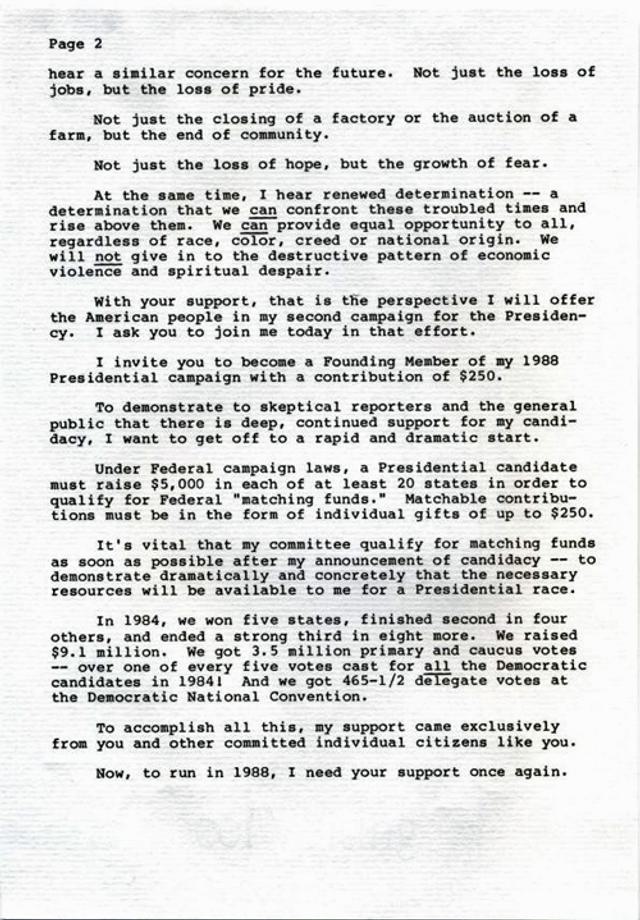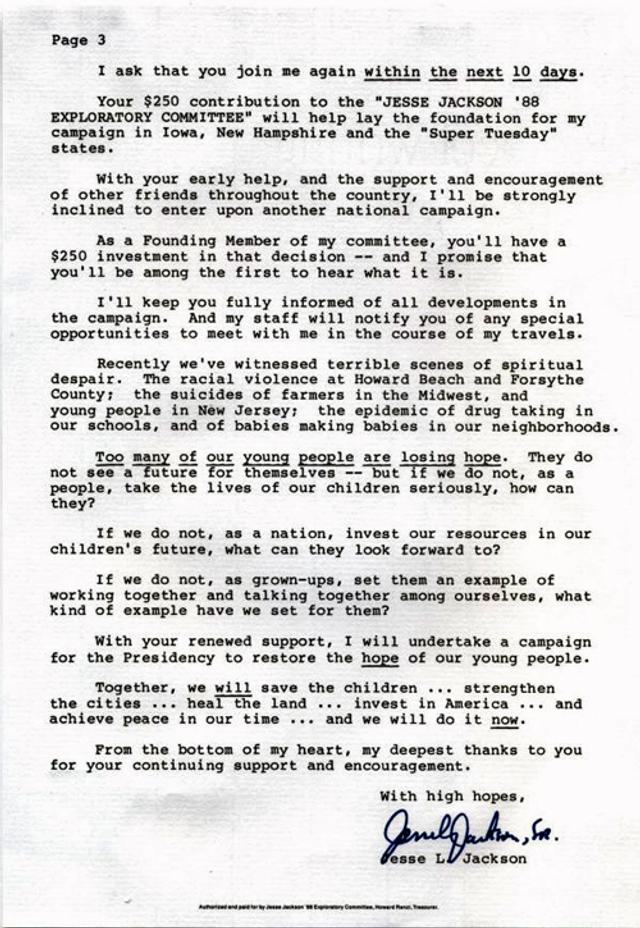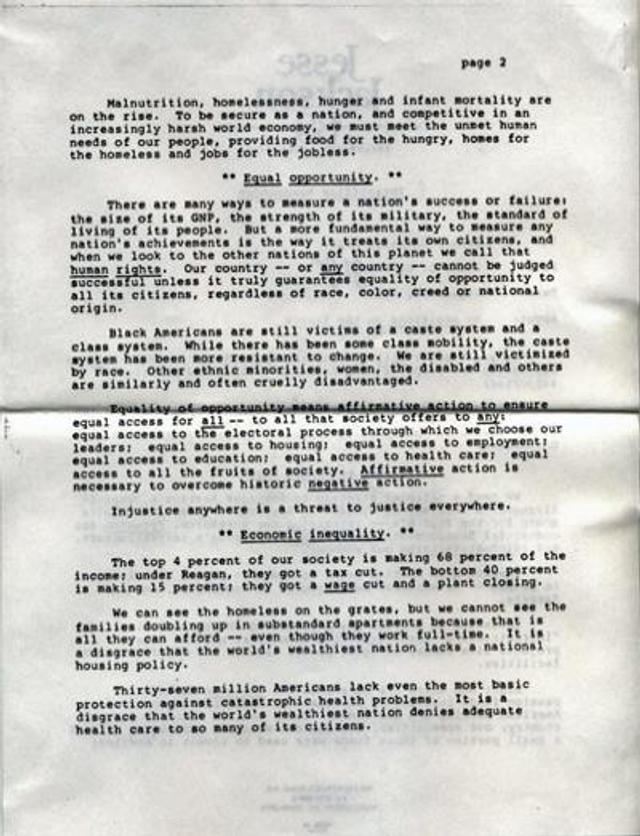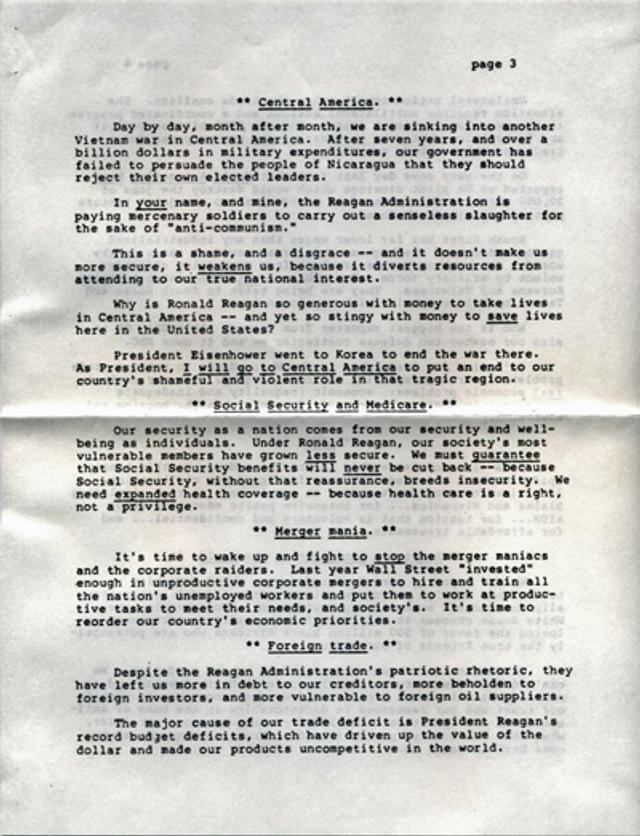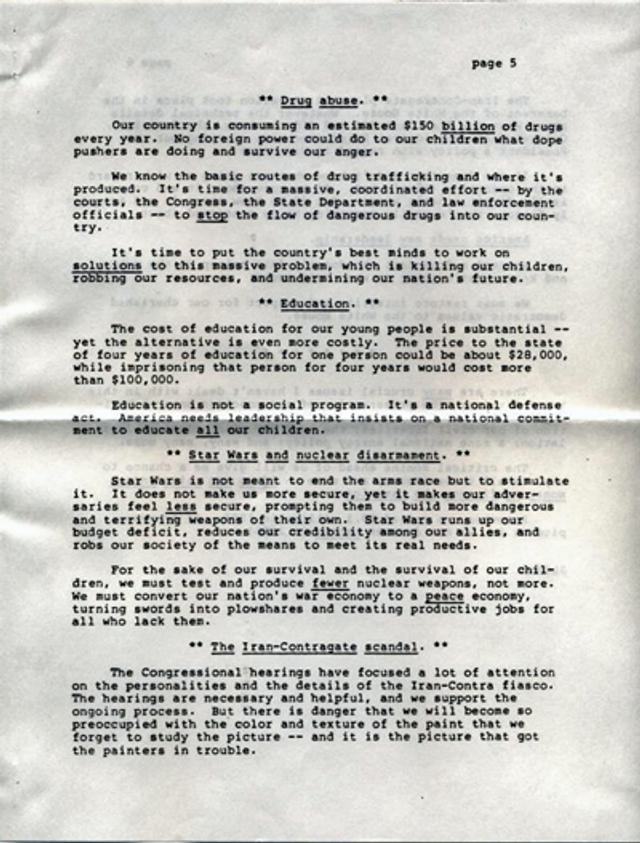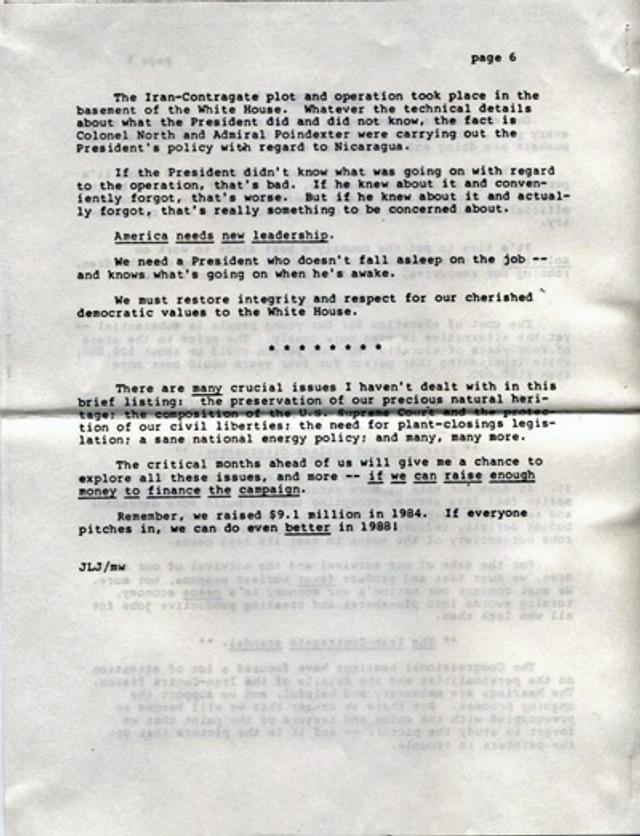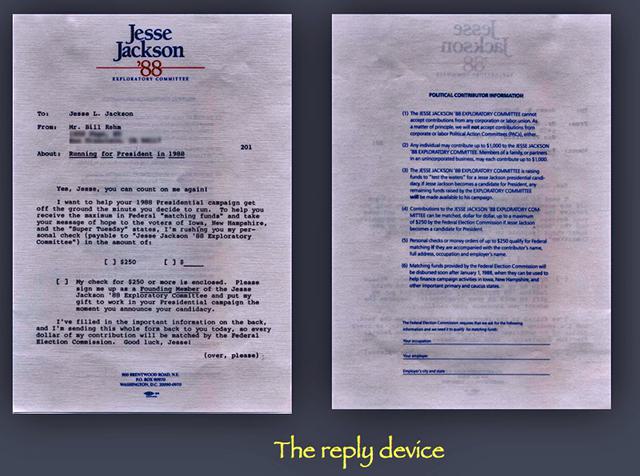Jesse Jackson’s bid for the White House, 1988
- Exhibited by
- Mal Warwick
- Added
- May 12, 2011
- Medium of Communication
- Direct mail
- Target Audience
- Individuals
- Type of Charity
- Political
- Country of Origin
- USA
- Date of first appearance
- September, 1987
SOFII’s view
Twenty years before the world had ever heard of Barack Obama, the Reverend Jesse Jackson was breaking new political ground with his campaign for the Democratic Party's nomination as candidate for the White House. He nearly succeeded, thanks in no small measure to innovative, ambitious and highly successful direct mail fundraising.
Mal Warwick wrote the copy. Peter Babcock designed the package.
Name of exhibitor
The package illustrated here was the 'high-dollar' version of the direct mail appeal that officially launched Jesse Jackson's presidential campaign in 1987. Its objective was to garner attention for the race, excite his many supporters, and raise enough money to seed a more broad-based donor acquisition campaign that could fuel a nationwide effort in the months ahead. It was deemed a huge success on all counts by everyone involved.
Background
The Reverend Jesse Jackson, Sr had run a high-profile insurgent campaign for President in 1984, raising eyebrows and gaining a good deal of press attention but raising little money and winning relatively few votes. In fact, he ended the campaign deeply in debt and, after long negotiations, paid only a small fraction of the total owing.
Reverend Jackson resolved to launch a more serious campaign a year and a half before the November 1988 elections. He was persuaded that a possible answer to his fundraising challenge lay in direct mail and telephone fundraising, and in the summer of 1987 he turned to Mal Warwick to undertake the effort.
The letter displayed here is the 'high-dollar' version of the mailing that launched the campaign in September 1987. The results were spectacular, with a response rate and an average gift that dramatically exceeded expectations. The mailing proved to be the beginning of a 14-month effort that raised US$7 million, keeping the campaign afloat and buying television time for ads that helped Reverend Jackson win so many votes in so many states that, until shortly before the Democratic primary race came to an end, he was convinced he would be elected President.
The success of Reverend Jackson's direct response fundraising campaign was deemed so unusual that Warwick was interviewed by most of the nation's leading news media, including The New York Times, The Wall Street Journal, The Washington Post, CNN, NBC, and the Associated Press, among many others.
Special characteristics
This was a 'high-dollar' package featuring strong production values and an elite appeal to elicit gifts of $250 to $1000. (The latter was the maximum permissible gift to a presidential candidate at that time.)
Details
This wasn't a test. It was a roll-the-dice campaign launch.
Merits
This mailing was the opening salvo in a direct response campaign that enabled Reverend Jackson's populist campaign to change the dynamics of presidential politics. Viewed in historic perspective, Reverend Jackson's near-success in 1988 gave the US public a foretaste of Senator Barack Obama's spectacular – and equally unlikely – breakthrough victory in 2008.
Also in Categories
-




